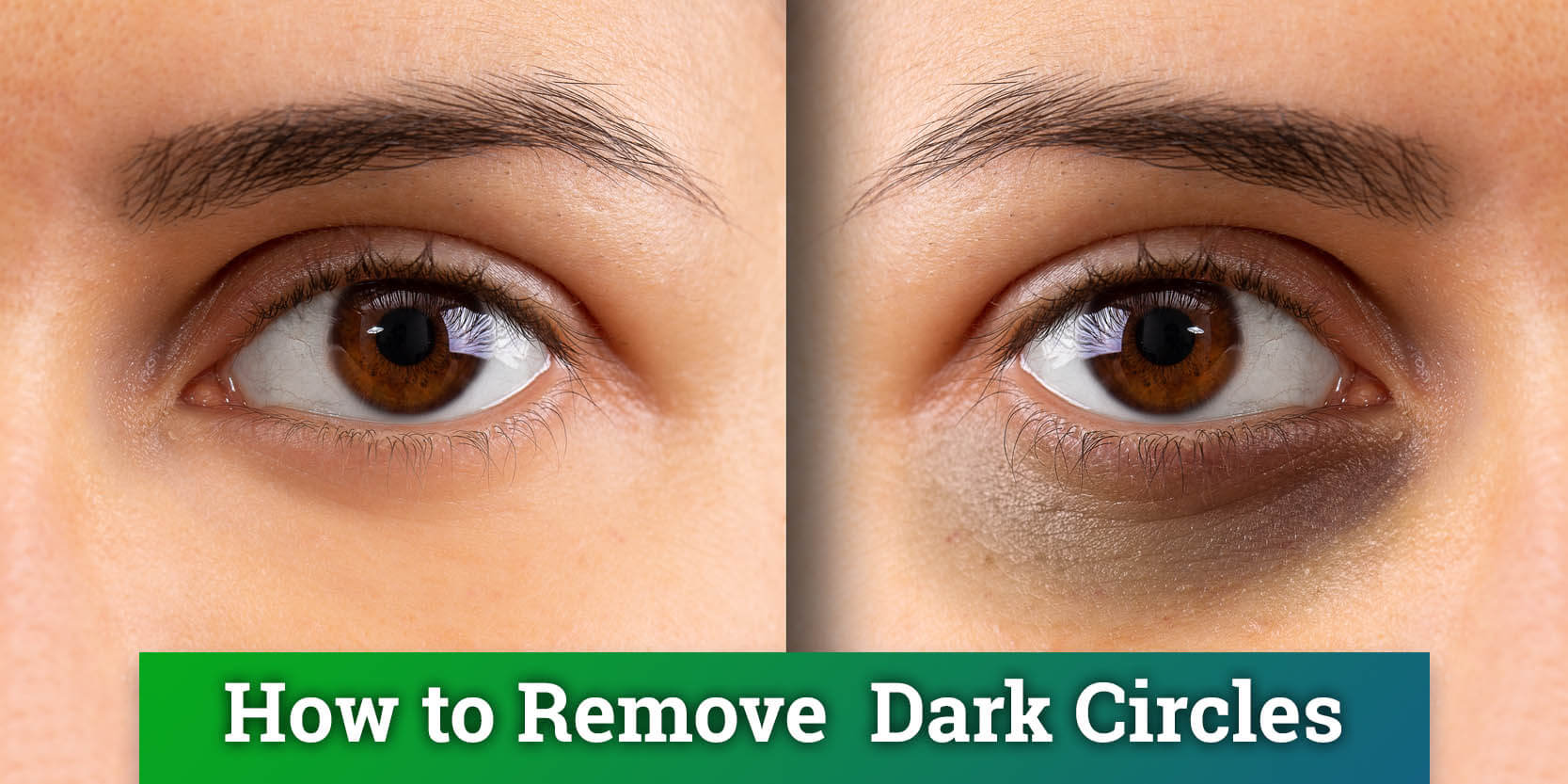For many people who suffer from dark under-eye circles, they can be a cause of irritation. Though dark circles are generally associated with a lack of sleep, some people discover that no matter how much sleep we get, those bothersome black circles persist!
There’s a lot more to dark circles than whether or not we’ve gotten enough sleep. So, let’s look into what causes under-eye circles and what they truly mean—and whether there’s anything we can do about it. (As it happens, there is!)
What causes dark circles under the eyes?
Dark circles are not the effect of being weary, contrary to popular perception. The thin skin beneath our eyes is more likely to exhibit blood vessels than the thicker skin on the rest of our body. Some people are genetically prone to have thin skin around their eyes. Furthermore, as we age and our skin loses suppleness, dark circles tend to worsen.
Allergies, sinus difficulties, and smoking, all of which impact circulation, can produce or exacerbate dark circles and under-eye puffiness. (Sensitivity to skincare or make-up products may also contribute to under-eye blackness, as most traditional personal care products contain recognized allergens.)
Natural remedies for dark circles under the eyes
There are a few simple, natural therapies that can help minimize the underlying reasons for dark circles and their appearance:
Proper diet and hydration are essential.
Vitamin and mineral shortages (especially iron and vitamins K and B12) can exacerbate under-eye dark circles by limiting the delivery of oxygen to our body tissue and enhancing the appearance of bluish veins.
(Note that iron and B12 deficits are frequent among vegetarians and vegans.)
Gluten and sugar, which are both inflammatory, contribute to the problem since inflamed blood vessels are more noticeable.
Eating a balanced diet rich in whole and anti-inflammatory foods, including plenty of leafy greens (at least a couple servings per day is best!) is the most fundamental strategy to prevent dark circles.
Dehydration can also make blood vessels beneath our eyes more noticeable due to the thin skin.
Staying hydrated (a basic rule of thumb is to drink at least 2/3 of your body weight in ounces of water every day) is another simple technique to counteract dark circles.
Staying hydrated with healthy infused water, which contains anti-inflammatory and purifying herbs, might be very beneficial.
Sleep well
Lack of sleep, as we all know, can exacerbate the look of dark circles, but this can mean either not getting enough sleep or getting the wrong kind of sleep.
It’s critical to create healthy sleep patterns that provide us with both the quantity and quality of sleep we require for optimal functioning for a variety of reasons (not simply lowering the look of dark under-eye circles!).
If you believe you might need them, here are nine natural techniques to improve your sleep.
Also, sleeping on your back (rather than your stomach or side) is supposed to elevate your head and cause less fluid to collect in your face, reducing the look of dark circles.
Relax
Stress hormones create swelling in the body, particularly under the eyes, and can be caused by lifestyle factors (stressful work, hectic schedules) or overconsumption of caffeine, sweets, or alcohol.
As strange as it may seem, this means that learning to handle stress and keep our bodies in a peaceful, healthy state can help to lessen the appearance of dark under-eye circles.
Here are some of our favorite natural stress relievers for a healthy and happy lifestyle… with the added benefit of decreasing dark under-eye circles.
Almond oil
Vitamin A, found in sweet almond oil, is an antioxidant that can help with dark under-eye circles.
Vitamin A is also anti-inflammatory and aids in moisturising and softening the delicate skin around the eyes.
(It can also be used to remove eye make-up naturally!)
Gently massage a few drops of almond oil into the skin beneath your eyes each night before bed.
You should apply almond oil on a daily basis for the greatest benefits.
Also, a couple of warnings:
- Use sweet almond oil as a base.
- Make sure you don’t get any almond oil in your eyes.
- If you’re pregnant (pregnant women should avoid topical vitamin A in general), or allergic to nuts (it’s made from almonds! ), stay away from the almond oil.
Tea bags
Caffeine constricts blood vessels, which is why this traditional “remedy” for dark circles works.
The caffeine in tea bags reduces the appearance of dark circles when applied to the skin around your eyes.
Tea also includes antioxidants and tannins, which help to tighten and soothe the skin around the eyes.
Cool caffeinated black tea bags in the refrigerator for 20 minutes after steeping them in boiling water for a few minutes. Lay down and cover your eyes with damp (not dripping) tea bags for 15-20 minutes.
Cold compress
By reducing the dilated blood vessels that cause puffiness and dark circles beneath the eyes, a cold compress can help. A cooling towel, a chilled spoon (place it in the fridge or freezer for a few minutes before using), or a chilled jade facial roller are all good options.
Gua sha
Gua sha is a traditional Chinese cosmetic treatment that lowers puffiness, helps detoxification, and may lessen the appearance of dark circles under the eyes and fine wrinkles.
Massage the area around your eyes with a carved jade or rose quartz gua sha face tool:
- Apply a light oil, such as almond or vitamin E oil.
- Sweep the gua sha tool throughout your under-eye area, all the way out to your temple hairline.
For each eye, repeat three times.
dark Under-eye circle remedies:
Natural under-eye concealer
Despite the natural solutions listed above, you may still have visible under-eye circles that you’d like to conceal on some days. Because it can readily cake in under-eye creases, the delicate under-eye area is famously difficult to apply make-up to.
It’s best to start with a light moisturiser or eye cream (almond oil or vitamin E oil will also work), then concealer, and finally powder. Use your ring finger, which is the weakest, to gently pat, not rub, the concealer into your skin.









